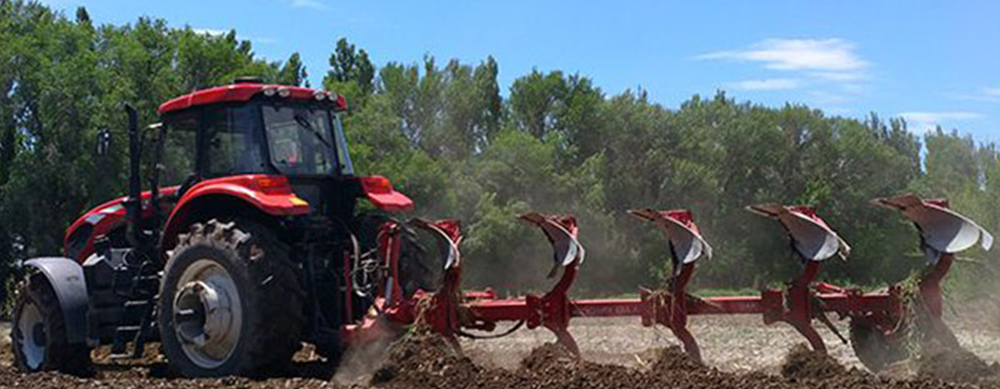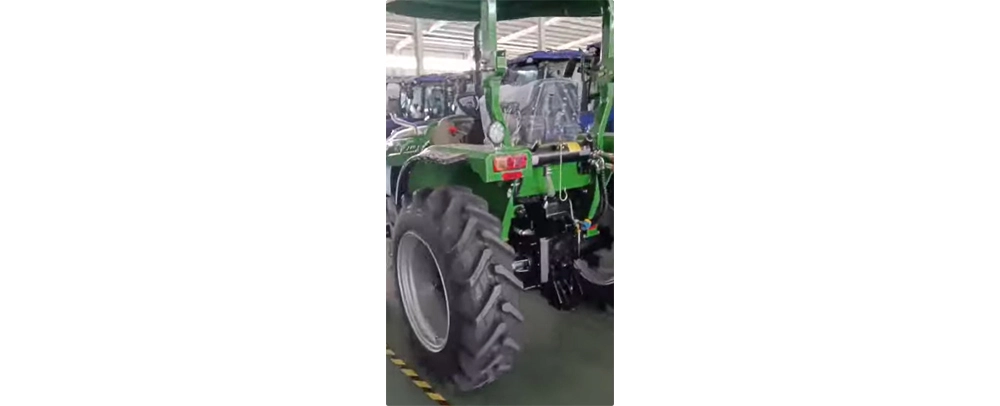Tractors are essential workhorses in agriculture and various industries. They feature a robust chassis built to withstand heavy loads and rough terrains. Powered by diesel engines, they deliver ample torque for tasks like plowing, tilling, and hauling. With a comfortable operator's cab, often equipped with ergonomic controls and good visibility, operators can work long hours with ease. Tractors come with a range of attachments, such as front loaders and backhoes, expanding their versatility. Whether it's on a farm, construction site, or for snow removal, tractors play a crucial role in getting the job done efficiently.
| Model | NLX1304 | NLX1404* | LX2204* | ELX2404 | ELP2604 | ELP2804 | ELP3004 | ELZ2804 | ELZ3004 |
| Engine type | 6 cylinder,naturally aspirated diesel | 6 cylinder turbocharged diesel engine | |||||||
| Rated power kW(hp) | 95.6(130) | 103(140) | 161(219) | 177(240) | 191.5(260) | 205(279) | 220.6(300) | 205(279) | 220.6(300) |
| Engine speed(rpm) | 2300 | 2200 | |||||||
| Clutch | Independent,dual action | Single-action | Torsional shock absorbers | ||||||
| Gears | 12F+4R(Option24F+8R) | 12F+4R(Option 24F+8R) | 16F+16R | 40F+40R | |||||
| Speed range(km/h) | 2.2-29.6 | 2.00-36.69 | 3.19-38.9 | 0.3-36.8 | |||||
| Brake | Wet,disc | Wet,disc | |||||||
| Rear PTO(rpm) | 540/1000 | 540/1000 | |||||||
| Lifting force(Linkjoint)(KN) | ≥47 | ≥75 | |||||||
| Hydraulic output(set) | 2 or 3 | 3 | 4 | ||||||
| Overall dimensions(L*W*H)(mm) | 5050*2380*3100 | 5430*2750*3130 | 5730*2890*3500 | 5935*2760*3350 | |||||
| Wheel base(mm) | 2688.5 | 2928 | 3104 | 3120 | |||||
| Ground clearance(mm) | 470 | 420 | 460 | 495 | |||||
| Wheel track(F/R)(mm) | 1672-2003/1662-2262 | 1822-2153/1662-2262 | 1552-2252/1700-2288 | 1591-2235/1849-2165 | 2050-2250/2050-2300 | ||||
| Min.turning radius(m) | 7±0.3 | 7±0.3 | 8±0.3 | 10±0.3 | |||||
| Tyre (F/R) | 14.9-26/18.4-38 | 16.9-28/20.8-38 | 600/70R30;710/70R42 | ||||||
| Min.operating mass(kg) | 5200 | 5250 | 8790 | 10000 | 10500 | ||||

1. The frame of a tractor is the main structural support. It's typically made of heavy-duty steel, which is welded or bolted together to form a rigid structure.
2. Engine: Tractors are usually powered by diesel engines due to their high torque output and fuel efficiency. The engine's horsepower can vary widely depending on the tractor's size and intended use.
3. Transmission: The transmission system is crucial for transferring the engine's power to the wheels or tracks. There are different types of transmissions, including manual, power-shift, and continuously variable transmissions (CVT).
4. Front Axle and Wheels/Tracks: The front axle supports the front of the tractor and allows for steering. Tractors can have either wheels or tracks. Wheeled tractors offer greater speed and are more suitable for hard-surfaced areas.
5. Rear Axle and Wheels: The rear axle is often larger and more robust than the front axle as it bears most of the tractor's weight and is responsible for transmitting the power to move the tractor forward.
6. Suspension System: While some tractors have a rigid chassis, others are equipped with a suspension system.
7. Cab: The operator's cab is designed to provide a comfortable and safe working environment. It's usually insulated to reduce noise from the engine and the outside environment.
8. Controls: Inside the cab, the tractor has a variety of controls. The steering wheel allows the operator to control the direction of the tractor.

1. Traction Work:For tasks like plowing and tilling, a heavy tractor with a long wheelbase, large front and rear wheels, high engine torque, and staged transmission is needed. It should also have good lifting capacity.
2. PTO Work:When mainly towing rotary harrows or agricultural mulchers, the tractor should have an engine with maximum torque close to the standard PTO speed.
3. Transport and Handling Work:Tractors for towing agricultural trailers or slurry tankers should be easy to maneuver, have strong steering capabilities, reduced empty weight (less than 9 tons), a smooth transmission, and a powerful and efficient braking system.
4. Farm Size:For farms less than 5 hectares, tractors with 30-60 horsepower are suitable. For very large farms, tractors with 100 horsepower or more, such as 200 hp or 300 hp tractors, are more appropriate.
5. Terrain Conditions:In hilly and mountainous areas, tractors with good passability and stability, like crawler tractors or four-wheel drive wheeled tractors with higher chassis, should be selected.
6. Assess the Soil Texture:If the soil is loose, such as sandy soil, the required tractor horsepower is relatively low.
7. Brand Reputation:Well-known brands usually have better product quality and technical research and development. You can refer to the usage evaluations of other users to select brands with good reputations.
8. After-sales Service:A perfect after-sales service system, including convenient maintenance points, timely parts supply, and professional technical personnel, can make the use process more worry-free.

High-Torque Engines: Tractors are typically equipped with diesel engines that offer high torque output. This enables them to pull heavy implements such as plows, harrows, and trailers with ease.
Versatile Transmission Systems: They have different types of transmissions. Manual transmissions provide a traditional gear-shifting experience and are known for their durability.
Robust Frame: The tractor's frame is made of heavy-duty steel to support the weight of the engine, transmission, and other components. It provides a stable base for the tractor, allowing it to withstand the rigors of heavy-duty work and rough terrains.
Suspension Options: Some tractors have a suspension system to improve the operator's comfort and enhance traction. The suspension helps to reduce vibrations and shocks when the tractor is moving over uneven ground.
Comfortable Operator's Cab: The cab is designed to provide a pleasant working environment. It has good insulation to reduce engine noise and external sounds.
Intuitive Controls: The controls inside the cab are user - friendly. The steering wheel allows for precise steering of the tractor.
Powerful Hydraulic Pump: The hydraulic pump, driven by the engine, pressurizes the hydraulic fluid. It supplies the necessary power to operate hydraulic components.
Three-Point Hitch: A standard feature on most tractors, the three-point hitch consists of two lower lift arms and a top link.

